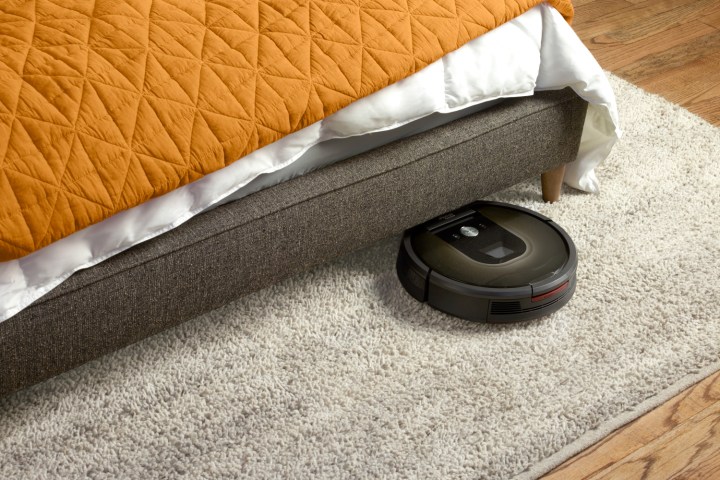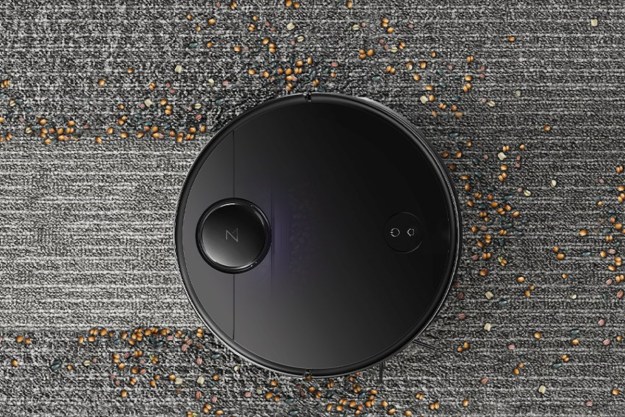
That’s why we test vacuum cleaners at Digital Trends, along with the slew of other technological devices that now populate your home. And make no mistake, vacuums are high tech. From digital motors controlled by processors to lithium-ion batteries and LED headlamps, modern vacuums share more DNA with your laptop than you would ever think — and we test them just as rigorously. Here’s a closer look at how.
Look and feel
A vacuum isn’t exactly a fashion statement, but no one wants a hulking monster that looks like you stole it from a motel in 1977, either. We’ll subjectively evaluate the look of the vacuum, but also more practical considerations that arise from it. Are those plastic shrouds going to snap off the first time they get bumped? Is there sufficient padding around the base of the vacuum to keep it from scuffing up your furniture? Is there a convenient spot to wrap the cord or a button to automatically reel it in?
Weight and maneuverability
Unlike most of the appliances we review, a vacuum cleaner performs its job in motion – a dance of whirling bristles, rolling wheels and purring motor. Which makes weight and portability a big deal. The sheer mass of the thing is one thing, but balance and a well-placed handle can help hide it in a well-designed cleaner. So can the self-propel mechanisms that help a vacuum crawl back and forth without as much muscle from you. A pivoting head, which many upright vacuums now sport, can make all the difference in maneuvering around tight spots. We’ll cart it around from room to room and vacuum around chairs, table legs, and other obstacles to determine just how nimble the vacuum can be.
Sound
Vacuums are loud. All of them. There’s no escaping the pronounced VRRRRR that inevitably comes from beating the dirt out of a carpet and sucking it through a maze of pipes into a dusty cyclone. But some are worse than others: We’ll evaluate the noise of a vacuum from the height of an average person using a sound meter, but also subjectively evaluate just how irritating it is – some ear-piercing tones just make you want to tear your hair out more than others. Like Fran Drescher’s voice.
Cleaning power
Ultimately a vacuum’s most important function is to clean, and we employ a benchmark process modelled after the same internal tests vacuum makers use to determine which does the best job.
Rather than measuring suction, which can be a misleading gauge of true performance, we get down and dirty. Literally. We take swatches of sample carpet like that you might have at home and defile them with dirt to see how a vacuum can bring them back to life.
We evenly spread out 100 grams of sand, flour, or rice, grind it in by walking all over the carpet in sneakers for 20 seconds, then vacuum it back up. Each vacuum gets 60 seconds to do its thing on each material, then we weigh the bag or canister to see what it has managed to collect. Perfect efficiency would mean sucking up all 100 grams we deposited, but even the best vacuums never reach this measure in real life.
To totally clean the carpet between tests, we flip it over and beat it mercilessly. Gravity, it turns out, is a force more powerful than any gadget.
Features and ease of use
How bright is the headlamp? How long before the bag or canister fills up? Will the battery really last long enough to clean your whole house? All of the little pieces of a vacuum add up to a machine that is either well thought out and easy to use, or poorly conceived and frustrating. We’ll test every feature to see whether it delivers.
Editors' Recommendations
- Best vacuum deals: Cordless to corded, Dyson to Bissell
- Red, green, flashing: What do my Shark vacuum’s lights mean?
- The best robot vacuums for 2024
- The best Dyson vacuums (cordless and upright options)
- How often should you replace your robot vacuum?


